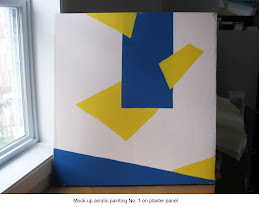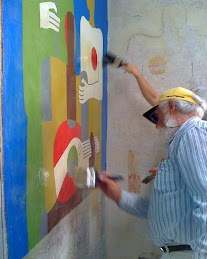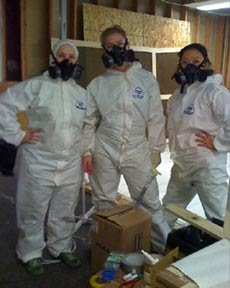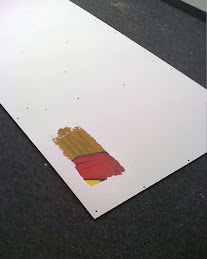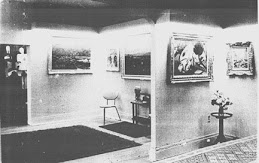Before moving to Canada, he was a self-made millionaire who dined with generals, and was frequently entertained by the greatest performers, writers and artists of Berlin, Vienna, and Paris. As a Jewish German he lived a life of adventure, evading the Nazis for many years until he was finally forced to flee. He counted sixteen occasions where the Nazis might have killed him. He credited miracles for some of his escapes, like the occasion when, after having escaped to Canada, he made a dangerous journey back to Hungary in 1940 to attempt to bring money back to support his new meat packing plant in Saskatoon. He was taken into custody by the police there and would likely have been jailed, but for the last-minute intervention of his well-connected friends in the horse racing world. He even returned to Hungary once, ignoring the pleas of his family, just to see one of his horses run an important race. He was nearly caught. On one occasion he came face to face with Adolph Hitler. Fourteen of Mendel’s close relatives were murdered by the Nazis, including his sister, her family, and his mother-in-law. His own wife and two daughters only barely escaped capture in Vienna.
In 1939 Mendel moved to Canada, selecting Saskatoon because, as he stated, “I am more at home … in smaller places, with average people rather than ‘big shots.’” He purchased a run-down former automobile factory on 11th Street West. The building had few prospects for re-use and the sellers were surprised to unload it. Mendel, however, was a self-described “eternal optimist” and believed he could refit it as a meat packing plant, as he had done several times before in Europe. Mendel had been forced to abandon most of his wealth in Europe and invested almost all his remaining money refurbishing the old building. One of his improvements was to build a comfortable living quarters in the upstairs of the factory where his family would live.
The early years were very difficult for Intercontinental Packers, his new business. Even Mendel was doubtful that it would survive, but after two years the prospects improved and Mendel moved his family out of the factory and into his house on Saskatchewan Crescent West. His wife Claire redecorated their former living quarters in the factory as an upstairs suite for entertaining business guests and, more importantly, as a gallery to exhibit Mendel’s growing collection of art. The rooms were fitted with thick rugs, lush drapes, a gramophone, and above all many great paintings. His art collection was described as one of the most important in North America and included works by Franz Marc, Pissarro, Renoir, Chagall, Emily Carr, and members of the “Group of Seven”, among many others. Alongside these masters he hung works by local artists who he encouraged. The room always had fresh cut flowers and the doors were never locked. The suite became a busy place, the center of the art world in Saskatoon-- an art salon in the European tradition. It was a place where young artists could come to see a caliber of art which would be envied in larger cities like Toronto and Montreal. Here they might meet master artists flown in by Mendel from Europe, or discuss art with Mendel and his daughter Eva who actively cultivated relationships with the local artists. Lavish New Year’s parties were held each year in the large cafeteria. Mendel, a humble and generous man, would wander among the guests asking “Are you happy? Is there anything I can do for you?”
One man working at Mendel’s factory then was the soft-spoken William Perehudoff. Perehudoff was a young farmer from Lanigan who did art in his spare time. Mendel happened to see one of his works, a sketch the artist called “Cow Barn.” Mendel bought it for $15. It may have been the first work sold by Perehudoff, now a member of the Order of Canada. With encouragement, Perehudoff left Saskatchewan to study under Jean Charlot in Colorado, then under Ozenfant in New York. When he returned in 1953 Mendel hired him to create frescoes on the plaster walls of the reception area in his upstairs gallery. The frescoes remain there today.
The effect of Mendel’s ‘salon’ on Saskatoon’s art world should not be underestimated. In the 1960’s Saskatchewan was recognized as the center of an important art movement. Clement Greenberg, who was arguably the world's most influential art critic at that time, characterized art from Saskatchewan as "New York's only competition." William Perehudoff's art was central among the work Greenberg was describing. Perehudoff had become one of Canada's foremost colour field painters and it seems likely Perehudoff, among other artists, owe some of their success to their formative years at Mendel’s upstairs gallery.
Fred Mendel had an amazing life of adventure and sadness. We are fortunate that he finally settled here and truly adopted Saskatoon as his home. He thrived wherever he lived and Saskatoon was no exception. His son-in-law, Cameron Mitchell, described Mendel, who was only five feet, one inch tall as “barely large enough to fit his giant heart.” He put all his heart into Saskatoon. He wrote that “Business is not enough if it means only the accumulation of money.” We continue to enjoy the legacy of his generosity, not just through our gallery in his name, but also because of the window he opened for us to Europe’s highest arts and ideas.





